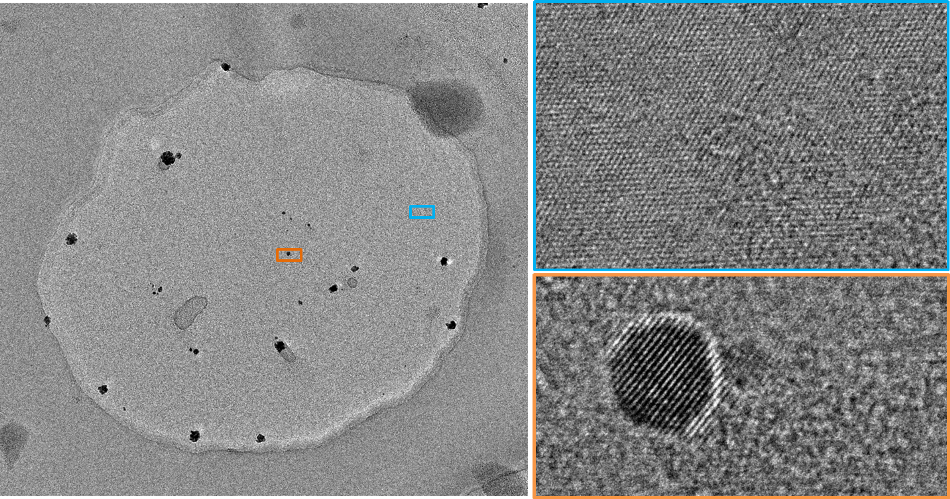Jan 16 2018
A team of researchers working at The University of Manchester have demonstrated new possibilities for observing nanomaterials in liquids by building a graphene ‘petri-dish’.
 Image credit: The University of Manchester
Image credit: The University of Manchester
New two-dimensional (2D) nanomaterials possess the potential to enhance efficiencies, decrease costs, and provide better performance in a wide range of applications including; understanding the degradation of battery materials or better design of nanomaterials for batteries so as to enhance their performance.
The unique properties displayed by 2D materials could also result in functional and antibacterial coatings, targeted drug delivery and bio-analysis. However, the difficulty of regulating growth and degradation at the atomic scale is presently an obstacle to fully making use of the potential of these sensational materials.
Scanning/transmission electron microscopy (S/TEM) is one of only few methods that allows imaging and analysis of separate atoms. However, the S/TEM instrument needs a high vacuum to shield the electron source and to stop electron scattering from molecular interactions.
A number of high profile studies have earlier exposed that the structure of functional materials at room temperature in a vacuum can be considerably different from that in their normal liquid environment. This could be like attempting to explore the structure of a dehydrated prune to comprehend the structure of the original plum.
A research team led by Dr Sarah Haigh and Dr Roman Gorbachev at the National Graphene Institute and the School of Materials at The University of Manchester has demonstrated that graphene and boron nitride can be integrated to develop an ideal nano petri-dish. Liquid samples within the dish can be imaged with single atom sensitivity and it is also possible to measure their elemental composition at the nanometer length scale. Their work has been reported in Nano Letters.
These engineered graphene liquid cells (EGLC) are constructed from 2D material-building blocks: they consist of a boron nitride (BN) spacer drilled with holes (where the liquid is contained) and compressed with graphene on both sides.
Graphene is the definitive window material - robust enough to safeguard the sample from a high vacuum environment, but at the same time sufficiently thin that the resolution of the electron beam is not sacrificed. Lead author Daniel Kelly said: “Unlike some previous designs our graphene liquid cells allow us to image the atoms for many minutes. We were even able to resolve individual atoms in water and observe them dancing under the electron beam.”
The researchers also showed that these new graphene liquid cells enable an order of magnitude improvement in the quality of elemental investigation in liquid cells. They examined the deposition of a 1 nm shell of iron on gold to grow core-shell nanoparticles. This new ability to track tiny concentrations over such small length-scales is a requirement for the growingly complex chemical structures of high-performing nanocatalysts.
Mingwei Zhou, the student creating these cells, said: “We are getting to understand how to make these more and more reliably, this makes the 2D petri-dish a promising route to further in situ TEM advancements, including imaging of small biological structures such as proteins.”